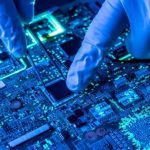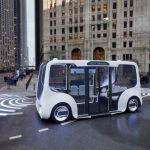 Music
Music  Music
Music  History
History 10 Less Than Jolly Events That Occurred on December 25
 Weird Stuff
Weird Stuff 10 Funny Ways That Researchers Overthink Christmas
 Politics
Politics 10 Political Scandals That Sent Crowds Into the Streets
 Weird Stuff
Weird Stuff Ten Bizarre Facts About The Doge Meme
 Our World
Our World 10 Ways Your Christmas Tree Is More Lit Than You Think
 Movies and TV
Movies and TV The 10 Coolest Stars to Set Sail on The Love Boat
 History
History 10 Things You Didn’t Know About the American National Anthem
 Technology
Technology Top 10 Everyday Tech Buzzwords That Hide a Darker Past
 Humans
Humans 10 Everyday Human Behaviors That Are Actually Survival Instincts
 Music
Music 10 Surprising Origin Stories of Your Favorite Holiday Songs
 History
History 10 Less Than Jolly Events That Occurred on December 25
 Weird Stuff
Weird Stuff 10 Funny Ways That Researchers Overthink Christmas
Who's Behind Listverse?

Jamie Frater
Head Editor
Jamie founded Listverse due to an insatiable desire to share fascinating, obscure, and bizarre facts. He has been a guest speaker on numerous national radio and television stations and is a five time published author.
More About Us Politics
Politics 10 Political Scandals That Sent Crowds Into the Streets
 Weird Stuff
Weird Stuff Ten Bizarre Facts About The Doge Meme
 Our World
Our World 10 Ways Your Christmas Tree Is More Lit Than You Think
 Movies and TV
Movies and TV The 10 Coolest Stars to Set Sail on The Love Boat
 History
History 10 Things You Didn’t Know About the American National Anthem
 Technology
Technology Top 10 Everyday Tech Buzzwords That Hide a Darker Past
 Humans
Humans 10 Everyday Human Behaviors That Are Actually Survival Instincts
10 Technologies to Make the Six Million Dollar Man a Reality
Since Steve Austin first appeared on television screens in the 1970s, the notion of a bionically enhanced “Six Million Dollar Man” has fascinated viewers worldwide. His superhuman strength, speed, and sensory perception captured the public’s imagination, but at the time, his abilities were pure science fiction. Fast forward to today, and a blend of cutting-edge science and technology could turn Steve Austin’s bionic prowess into reality.
Robotics, artificial intelligence, and genetic engineering have made staggering advancements in recent years. From regenerative medicine to muscle stimulators, scientists and engineers are on the cusp of creating superhuman capabilities that mirror those of the Six Million Dollar Man. Here are ten remarkable technologies that could help us build Steve Austin’s bionic future.
Related: 10 Bizarre Things That Were 3-D Printed
10 Exoskeleton Power
In the quest to create the Six Million Dollar Man, Sarcos Robotics leads the way with its groundbreaking exoskeleton, the Guardian XO. This powered exosuit grants workers superhuman strength, enabling them to lift 200 pounds (90.7 kilograms) while feeling like they’re lifting a mere 10 pounds (4.5 kilograms). With 24 degrees of freedom, the suit uses force sensors to detect every movement of the operator, then moves its own limbs in parallel, effectively amplifying the user’s strength and endurance.
The Guardian XO is entirely electric and untethered, offering a runtime of two hours with hot-swappable battery packs for continuous operation. As a humanoid robot, it bypasses the user’s weight by transferring it directly to the ground through its own legs and feet. While Sarcos CEO Ben Wolff admits it took 30 years and $300 million to bring this technology to life, the result is a strength-multiplying exoskeleton now ready for industrial and military use.
Sarcos isn’t stopping there. The Guardian XO’s future iterations will include plastic fairings over the suit and quick-change end-effectors. The company aims to improve efficiency and reduce power consumption, creating an exoskeleton that is both versatile and powerful enough to handle the challenges of various industries. With investors like Caterpillar, GE Ventures, and Microsoft on board, Sarcos Robotics is bringing us closer to a world where bionically enhanced humans are a reality.[1]
9 The DEKA Arm’s Bionic Control
Imagine a prosthetic arm so advanced it feels like an extension of yourself. The DEKA Arm, a marvel of modern engineering, brings us closer to this reality for amputees. Unlike traditional prosthetics that rely on cumbersome controls, the DEKA Arm leverages the power of myoelectric technology. This innovative system detects subtle electrical signals generated by muscle contractions. By interpreting these signals, the DEKA Arm translates them into a wide range of fluid movements.
This groundbreaking technology frees amputees from the limitations of mechanical controls. Just like Steve Austin from The Six Million Dollar Man, users can control their prosthetic limb with an almost thought-like quality. This intuitive interface allows amputees to perform a diverse set of tasks with newfound ease, from simple grasping motions to more complex actions like using tools or pouring a drink.
The DEKA Arm represents a significant leap forward in artificial limb technology. It offers amputees a level of control and functionality that was once relegated to science fiction. With the DEKA Arm, the dream of a bionic future becomes a tangible reality for many.[2]
8 Bionic Eyes Offer a Technological Leap
Remember the bionic eye from The Six Million Dollar Man? While those features are still science fiction, advancements in bionic eyes are offering a glimpse into a future where significant vision restoration becomes a reality.
Today’s bionic eyes focus on restoring light perception for those with vision loss. They work by bypassing damaged cells and stimulating healthy ones with electrical pulses. While not perfect, they allow users to perceive light, shapes, and even movement.
The future holds immense potential. Researchers are exploring next-generation technologies like augmented reality contact lenses and implantable telescopic systems. These advancements could not just restore sight but also augment it beyond human limitations. Bionic eyes are rapidly evolving, and with continued research, they have the potential to make the vision depicted in The Six Million Dollar Man a reality.[3]
7 Gene Therapy Boosts Bionic Ears
Remember the incredible hearing of Jaime Sommers’s—the Bionic Woman—bionic ear? While replicating that technology entirely remains science fiction, researchers are making exciting advancements in enhancing cochlear implants, the bionic devices that offer a sense of hearing to the deaf and hard of hearing.
A recent study published in Science Translational Medicine explored a groundbreaking approach using gene therapy. Researchers in Australia successfully used tiny electrical pulses to deliver gene therapy to the inner ear of deafened guinea pigs. This involved injecting short strands of DNA into the inner ear cells. Following this, electrical pulses trigger these cells to produce proteins that promote nerve growth near the cochlear implant.
The results were promising. Treated guinea pigs showed significant regrowth of auditory nerves, and their implants were able to stimulate these new nerves, leading to a response in the brain. While this is an early-stage study, it holds immense potential for the future of cochlear implants. Imagine a world where these devices not only restore basic hearing but also allow for a wider range of sound perception, perhaps even approaching the superior hearing depicted in The Bionic Woman.
This research paves the way for future advancements that could push the boundaries of bionic ears and bring us a step closer to the extraordinary hearing of science fiction.[4]
6 Neuralink’s Thought-Controlled Tech
Remember Steve Austin’s direct neural control of his bionic limbs in The Six Million Dollar Man? While mind control isn’t quite here yet, Neuralink is making significant strides in creating a mind-machine interface. This technology would bridge the gap between the brain and external devices, allowing us to control them with our thoughts.
Neuralink’s brain implant uses tiny threads embedded in the brain to detect electrical signals generated by neural activity. These signals are then decoded by a computer, enabling users to control prosthetic limbs or external devices with just their thoughts.
While still under development, other brain-computer interfaces are already being used in limited capacities. For instance, some paralyzed individuals can use BCIs to control robotic arms or sip coffee through a straw.
The future of neural interfaces holds immense promise. Imagine controlling your computer or smartphone with just your thoughts or even augmenting your own senses with real-time information. Neural interfaces have the potential to revolutionize how we interact with the world, bringing us closer to the seamless mind-machine connection depicted in The Six Million Dollar Man.[5]
5 Muscle Stimulation with FES
Imagine the superhuman strength of Steve Austin. While replicating that technology entirely remains science fiction, functional electrical stimulation (FES) is a step toward a bionic future. FES uses electrical currents to stimulate muscles, increasing strength and improving movement.
Originally bulky and limited, FES is experiencing a renaissance. Advancements in technology have led to sleek, user-friendly wearable devices. Companies like Cionic are developing FES systems with machine learning that customize stimulation for individual needs.
FES isn’t just about walking. It’s being explored for restoring hand function, treating sleep apnea, and even aiding swallowing. Researchers are even exploring combining FES with sensory stimulation to potentially “re-educate” paralyzed muscles and offer groundbreaking new forms of therapy. FES is a powerful tool that helps people regain mobility and paves the way for a future where technology can augment human capabilities in extraordinary ways.[6]
4 Superhuman Implants
Imagine possessing the incredible resilience of Steve Austin, thanks to bionic implants. While replicating his exact technology remains in the realm of science fiction, significant advancements are being made in bioengineering. These fields are creating new materials that could offer superhuman strength, durability, and faster healing.
One area of exploration involves biocompatible materials like synthetic polymers that can be used to create implants that integrate better with the body. Researchers are also developing hydrogels that can serve as coatings for existing implants or even be used to create entirely new ones.
The potential applications of these technologies are vast. Imagine soldiers with enhanced resilience on the battlefield or athletes pushing the boundaries of human performance. Bioengineering has the potential to revolutionize human resilience, bringing us closer to the superhuman capabilities depicted in The Six Million Dollar Man.[7]
3 Enhanced Metabolism
Steve Austin’s bionic enhancements likely demanded an incredible metabolism to keep him running at peak performance. While replicating that entirely remains science fiction, advancements in metabolic research offer a glimpse into a future where we might achieve similar feats.
One area of exploration involves boosting mitochondrial function. Mitochondria are the powerhouses of the cell, converting food into energy. Researchers are investigating methods to increase mitochondrial activity, potentially leading to faster metabolisms and improved endurance. Imagine burning calories at an accelerated rate and recovering from exertion much quicker, just like Steve Austin.
Another promising avenue is NAD+ (nicotinamide adenine dinucleotide), a molecule involved in cellular energy production and repair. Studies suggest that NAD+ levels decline with age, and supplementing with NAD+ precursors may enhance metabolism and promote healthy aging. Imagine maintaining peak physical condition for a longer period of time.
Beyond supplements, researchers are exploring biohacking—optimizing metabolism through specialized diets and exercise routines. Imagine tailoring a lifestyle to perfectly fuel your enhanced bionic capabilities. Enhanced metabolism research holds promise for pushing human performance beyond current limits, blurring the line between human and machine.[8]
2 Advanced Artificial Skin
Imagine Steve Austin’s bionic enhancements seamlessly hidden beneath a layer of artificial skin, indistinguishable from his natural flesh. While replicating that entirely remains a challenge, advancements in biomaterials and bioengineering are paving the way for a new generation of artificial skin for prosthetic limbs and other bionic implants.
These next-generation skins will go beyond mere aesthetics. Researchers are developing artificial skin that can mimic the properties of real skin, including temperature regulation, sweat production, and even a sense of touch. Imagine a prosthetic limb with artificial skin that feels warm to the touch, adjusts to temperature changes, and even transmits pressure sensations.
This technology holds immense promise for the future of bionics. Advanced artificial skin could not only enhance the cosmetic appearance of prosthetics but also improve their functionality and user experience. By offering a more natural interaction with the environment, these advancements could bring us closer to the illusion of a completely human exterior, just like Steve Austin’s seemingly unaltered body.[9]
1 The Power of Nanotech
Steve Austin’s bionic upgrades were impressive but bulky. Nanotechnology offers a solution: manipulating matter on an atomic level to create microscopic marvels for bionics.
Imagine artificial muscles built from nanofibers, mimicking natural muscles with unmatched power and flexibility. Woven into prosthetics, these microscopic fibers could grant superhuman strength and dexterity. Nanomaterials could also revolutionize neural interfaces, the connection between the brain and bionics. Super-thin nanowires could interface with nerves, transmitting signals with incredible precision, leading to prosthetics that feel natural and intuitive.
Nanotech goes beyond mimicking biology. Imagine microscopic sensors embedded within artificial skin, detecting pressure, temperature, and even chemicals. These sensors could grant users a heightened awareness and seamless interaction with the environment. While still young, nanotechnology in bionics holds the key to a future where bionic enhancements aren’t bulky add-ons but transformative improvements woven into the very fabric of prosthetics, bringing us closer to a real Six Million Dollar Man on a microscopic scale.[10]








